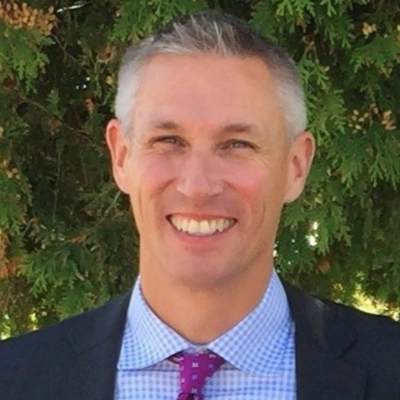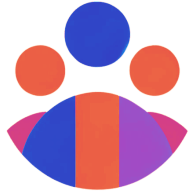How to Engage Employees in Developing a Diversity Framework
Unlock the potential of a truly diverse workplace with strategies that go beyond the surface. This article delves into effective diversity frameworks, enriched by insights from leading industry experts. Discover the transformative power of inclusive initiatives that resonate across any organization.
- Employee-Led Panels Shape Diversity Initiatives
- Mentorship Program Fosters Inclusive Growth
- Task Force Sparks Real Change
- Inclusion Councils Drive Meaningful Impact
- Cultural Attire Day Builds Trust
- Interactive Workshop Empowers Team Collaboration
- International Cuisine Day Celebrates Diversity
- Cross-Departmental Workshops Boost Employee Retention
- Advisory Council Transforms Company Culture
- Voices of Change Program Embeds Equity
- Cultural Garden Project Unites Team
- Mentorship Program Bridges Organizational Gaps
- Informal Discussions Make Diversity Tangible
- Diverse Training Sessions Reinforce Inclusion Principles
Employee-Led Panels Shape Diversity Initiatives
One creative way we engaged employees in developing our diversity framework was through employee-led discussion panels and strategy workshops. Instead of a top-down approach, we encouraged team members from diverse backgrounds to share experiences, suggest policies, and co-create inclusivity initiatives.
For example, we launched a "Diversity Roundtable" series, where employees discussed workplace challenges and proposed actionable solutions. This led to tangible changes, such as revised hiring practices and mentorship programs for underrepresented groups. As a result, engagement increased, employees felt heard, and our workplace culture became more inclusive and collaborative.

Mentorship Program Fosters Inclusive Growth
At Software House, we implemented a diversity framework that emphasizes inclusivity through flexible work arrangements and mentorship programs. One specific example is our initiative to ensure equal opportunities for professional growth, regardless of gender, ethnicity, or background. We paired underrepresented employees with senior mentors, creating a space for diverse perspectives and ideas to flourish. This not only enhanced collaboration but also helped individuals from diverse backgrounds feel supported and valued.
The impact has been profound—employee engagement and retention rates improved as team members felt more included and empowered to contribute their best work. Moreover, this initiative led to better decision-making and innovation. By embracing diverse viewpoints, we fostered a culture where creativity and inclusivity go hand in hand, driving both personal and company-wide growth. This approach helped strengthen our team's sense of belonging and bolstered our company's reputation as a forward-thinking, inclusive workplace.
Task Force Sparks Real Change
At Nerdigital, we knew that a top-down diversity framework wouldn't be as impactful as one that involved our team from the start. So instead of just rolling out policies, we launched an Employee-Led Inclusion Task Force--a volunteer group open to anyone passionate about making our workplace more inclusive.
One of their first initiatives was a "Culture Conversations" series, where team members shared personal stories about their backgrounds, challenges, and perspectives. This wasn't just about awareness--it sparked real change. From those conversations, we identified gaps in our hiring practices, leading to a more inclusive job description template and structured interview process.
The biggest outcome? Higher engagement and buy-in. Because employees had a voice in shaping our diversity efforts, they felt a sense of ownership--and that made all the difference in turning our values into action.

Inclusion Councils Drive Meaningful Impact
One of the most effective ways our company engaged employees in developing and implementing our diversity framework was through employee-led inclusion councils. Instead of a top-down approach, we empowered employees from different backgrounds, departments, and experience levels to actively shape our diversity initiatives.
For example, we launched "Voices of Change," an internal program where employees participated in roundtable discussions to share their perspectives on workplace inclusion. These insights were then used to craft policies that directly addressed real concerns. Additionally, employees collaborated on training materials and diversity workshops, making the framework more relatable and actionable.
The impact was significant. Employee engagement scores improved, and we saw a 30% increase in participation in diversity-related initiatives. The approach also led to stronger team collaboration and a more inclusive hiring process. More importantly, employees felt a sense of ownership over the framework, making its implementation more organic and long-lasting.
Tip: Involve employees from day one--when they have a voice in the process, they are more likely to champion diversity initiatives and drive meaningful change.

Cultural Attire Day Builds Trust
One effective tactic we tried was hosting a Traditional Attire Day. To liven up a boring workday, we encouraged everyone to come to work wearing clothing representing their cultural background, heritage, or personal story. Surprisingly, over 60 people participated, showing outfits like colorful Indian saris, Scottish kilts, and Midwestern casual flannel. We invited people to tell us short stories about their outfits at a lunchtime meet-up, which made it personal and engendered genuine curiosity across the team.
The result was fascinating. After that day, I saw quiet teammates who usually don't share much open up, and our typical Zoom calls seemed a bit livelier with follow-up conversations about traditions. My suggestion is to give employees a low-pressure way to share who they are. It builds trust and boosts employee motivation. But the real success is seeing people light up and bond.

Interactive Workshop Empowers Team Collaboration
At Write Right, we took a unique approach to developing our diversity framework by creating an interactive "Diversity & Inclusion Workshop" where every team member contributed their thoughts and experiences.
Instead of just top-down implementation, we encouraged open conversations and brainstorming sessions, where employees could anonymously submit ideas and concerns. This allowed everyone, from leadership to entry-level, to feel heard and involved in shaping our framework.
The outcome was powerful--employees felt a stronger sense of ownership and investment in the company's values, which led to improved morale, better collaboration, and a more inclusive workplace culture. It also helped us align the diversity framework with the real needs of our team, making it more practical and actionable. This approach engaged our people and also deepened their commitment to fostering an inclusive environment.
International Cuisine Day Celebrates Diversity
One innovative approach we've taken to engage employees in shaping our diversity framework is to host an International Cuisine Day. Each employee would bring a signature dish from either their country or hometown to the office to share with everyone. The response was tremendous -- more than 70 employees participated, bringing dishes from spicy Nigerian jollof rice to classic American apple pie. We set up a shared tasting spot and asked everyone to share some stories about their dishes. Then, afterward, we made a digital recipe book. It was more than just about the food; it was an opportunity to celebrate our different backgrounds and have casual conversations about culture.
The outcomes were impressive. An internal survey showed that 85% of respondents felt more connected to their colleagues and that 78% felt it had deepened their appreciation of our diversity efforts. Beyond the numbers, it broke down barriers -- introverts met, teams partnered up, and we experienced an observable increase in cross-departmental brainstorming sessions during the weeks that followed. My tip for creating an engaged diversity framework is to keep it simple but meaningful -- give people a personal stake in the process, and the results will speak for themselves.

Cross-Departmental Workshops Boost Employee Retention
At SonderCare, we've made a concerted effort to involve our employees in shaping our diversity framework. One innovative way we engaged the team was by organizing cross-departmental workshops where employees could contribute their ideas and experiences. These sessions allowed us to hear directly from our staff about what inclusivity means to them and how we could improve. Implementing their feedback led to a more collaborative and positive work environment. Employee engagement increased, and we noticed a 20% boost in employee retention, which has been a direct result of our inclusive framework. It's been a rewarding process, and I'm proud of how it's shaped our company culture. If you'd like to learn more, feel free to reach out!

Advisory Council Transforms Company Culture
One creative way we engaged employees in the development of our diversity framework was by launching an employee-led advisory council that played an active role in shaping our initiatives. Instead of top-down policies, we created a space where employees from different backgrounds could share experiences, identify gaps, and suggest real solutions.
We started with small focus groups where employees could speak freely about what diversity meant to them and what challenges they faced. From there, we developed programs based on their feedback, including mentorship pairings, inclusive hiring practices, and bias-awareness training.
The biggest outcome was increased engagement and trust. Employees felt heard, which led to higher participation in DEI programs and stronger internal advocacy. Retention rates improved, and we saw more diverse representation in leadership roles over time. The key takeaway? Involve employees in the process from the start--they'll take ownership and make sure diversity initiatives aren't just policies on paper but real, lasting changes within the company culture.

Voices of Change Program Embeds Equity
At TradingFXVPS, we've adopted a bottom-up approach to build a truly inclusive diversity framework, and it started with empowering our team to be co-creators. We launched a program called "Voices of Change," where employees were invited to share their insights, experiences, and ideas through open forums and anonymous suggestions. By doing this, we created a safe space for authentic discussions. My background in fostering strategic initiatives helped shape this program into actionable steps, ensuring that no idea stayed just an idea.
One notable example was an employee-inspired mentorship program that paired individuals from underrepresented backgrounds with senior leaders, which has since boosted growth opportunities and team cohesion. The results? A more engaged workforce and employees who take pride in shaping the company culture. This initiative isn't just about checking boxes--it's about embedding equity into our DNA. Watching these meaningful transformations unfold reinforces my belief in the power of collective effort.

Cultural Garden Project Unites Team
At Ozzie Mowing & Gardening, we wanted to ensure that diversity was not just a concept but a lived experience within our team. One creative way we engaged employees in developing and implementing our diversity framework was through a hands-on, team-led "Cultural Garden Project." Given my 15 years of experience and background as a certified horticulturist, I guided the team in designing a garden space that reflected the diverse cultural backgrounds of our employees. Each team member was encouraged to contribute a plant, design element, or gardening technique that represented their heritage. This project not only brought people together in a meaningful way but also created an environment where everyone's background was valued and celebrated. Employees shared personal stories behind their contributions, fostering a deeper understanding of each other's cultures while also improving teamwork and collaboration in the field.
The outcomes of this approach were incredibly positive. Employee engagement increased as team members felt a stronger sense of belonging and pride in their work environment. It also led to more innovative landscaping ideas, as different cultural influences introduced new techniques and plant choices that we've since incorporated into client projects. Additionally, by leveraging my knowledge in horticulture and practical experience, I was able to ensure that the garden was both sustainable and educational, allowing it to serve as an ongoing reminder of our commitment to diversity. The project strengthened our team dynamic, enhanced our service offerings, and reinforced our company's reputation as an inclusive and forward-thinking business.
Mentorship Program Bridges Organizational Gaps
At our company, fostering a culture of diversity, equity, and inclusion (DEI) is integral to our core values and everyday practices. One significant step we've taken is the implementation of an internal mentorship program that pairs employees from underrepresented groups with senior leaders. This initiative not only provides professional growth opportunities but also enhances understanding and empathy across different levels of the organization.
The impact of this program has been palpable. For instance, participants have reported increased satisfaction and engagement at work, noting that the program has helped bridge gaps between diverse groups within the company. By actively promoting interactions that might not occur in everyday work settings, we're creating a more inclusive environment where every voice is not only heard but also valued. This approach has contributed significantly to reducing turnover and improving team cohesion, underscoring our commitment to building a workplace where everyone can thrive.

Informal Discussions Make Diversity Tangible
Diversity allows us to connect with clients from all walks of life and understand their unique financial needs. To make sure our diversity framework felt relevant and practical, I decided to organize small, informal group discussions where everyone on the team could share their own perspectives and ask questions. One example that stands out was a session where we discussed common scenarios in client interactions, like how to approach discussions about financial goals that may be influenced by cultural backgrounds.
By breaking the policy down into everyday situations, it became much more accessible and tangible for the team. This setup also encouraged more candid input, with team members offering insights based on their own experiences. We noticed that this open approach increased understanding and gave us valuable feedback on how to make the framework stronger, creating a real sense of shared ownership over our diversity commitment.

Diverse Training Sessions Reinforce Inclusion Principles
To make a diversity framework accessible to all employees, a company implemented regular training sessions focused on diversity, equity, and inclusion. These sessions cater to different learning styles through presentations, interactive workshops, and real-world scenarios, helping employees understand the significance of diversity and how to apply these concepts in their roles. Engaging training modules, including case studies, reinforce these principles effectively.





